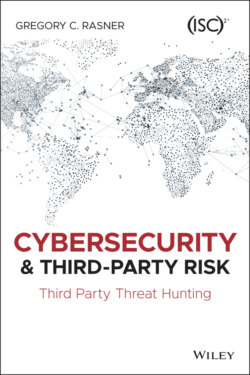Читать книгу Cybersecurity and Third-Party Risk - Gregory C. Rasner - Страница 20
The Morris Worm
ОглавлениеIn 1988, Robert Morris, like all curious computer scientists, wondered “how big is the internet”? And like all good curious computer scientists, he decided to write a program to find out the answer of “how big?” The answer was found by his worm, which traveled through networks like wildfire, invaded Unix terminals, and crossed domains faster than a speeding bullet. His worm was so good at replicating that it would infect the same computer multiple times, and each additional infection would continually slow the computer down to the point of damaging it. Robert Morris was charged under crimes covered by the Computer Fraud and Abuse Act. Enacted in 1986, this act was an amendment to the first federal computer crime law and addressed hacking. This act continues to be updated, but only as recently as 2008, which reaffirms our earlier point that regulators are not considered to be at the cutting edge, and that good cybersecurity programs should not be designed to meet regulations. Such programs should exceed these regulations in order to have any hope of being successful. If we consider the 1970s as the start of cybersecurity, it is only within the last 20 years that companies have had Chief Information Security Officers (CISOs) and divisions, groups, or teams who reported directly to them.
Cybersecurity, like any other discipline, has developed several frameworks, associations, testing accreditors, credentials, and subdisciplines over those 20+ years. ISC2, ISACA, and EC‐Council, are just three of the credential/testing accreditors. CISSP, CIPM, CISM, CompTIA Security+, and countless other managerial, technical, and administrative certifications are also available. For the purposes of demonstration on the complexity of the cybersecurity subject matter, we use the Certified Information Systems Security Professional (CISSP) as the best example. This certification is still the gold standard in the industry, and can be proven by study after study indicating that the demand vastly outstrips the supply of certificate holders of CISSP.
Within infosec, they have developed clear subdomains (citing the CISSP 8 domains):
Security and Risk Management
Asset Security
Security Architecture and Engineering
Communications and Network Security
Identity and Access Management
Security Assessment and Testing
Security Operations
Software Development Security
Further subdomains can be found within these cybersecurity domains. For example, let's look at the Security and Risk Management domain:
Security and Risk Management Domain: It comprises 15 percent of the CISSP exam and is the largest domain found in CISSP. The latest editions of the study guides for this exam detail the following:The Confidentiality, Integrity and Availability of informationSecurity governance principlesCompliance requirementsLegal and regulatory issues relating to information securityIT policies and proceduresRisk‐based management concepts
This information is in Chapter 1 “Security and Risk Management” in the CISSP All‐in‐One‐Exam, 8th Edition by Shon Harris. Notice there is one bullet on risk‐based management concepts. Within those study guides, none of them have more than two pages on “Supplier Management” or “Vendor Risk Management Process,” depending on how it is listed in the index. The focus of these guides is on the management of a process and compliance language, such as service‐level agreements (SLAs), legal concerns, and privacy regulations. Supplier management is viewed as something belonging to a process team, which certainly some of the work will be, but it misses the opportunity to take an aggressive approach, such as in a Security Operations domain.
However, this is not the responsibility of the CISSP body of knowledge or necessarily any other cybersecurity certification. These guides are designed to give frameworks and a library of information that the cybersecurity profession can then use to manage the risk. Hundreds of specialties and job roles exist in cybersecurity and except for job‐specific certifications, the study guides and exams are not prescribing how cyber organizations run their operations and programs. In this case, the cybersecurity industry has been largely focused on securing internal networks. TPRM professionals have spent the last 10 years growing their profession. The gap has been widening over time, but the COVID‐19 pandemic made the problem more pronounced. The approach for this domain must evolve into a field of its own, mimicking cybersecurity operations more than cyber Governance, Risk and Compliance (GRC).
Cybersecurity operations teams have been developing at an ever‐increasing pace in the last 10 years, especially after the Sony Pictures hack in 2014, which showed that a foe like a state actor with determination and nearly unlimited resources (unlike a script kiddie or even criminal hackers) can get into any company and disclose such deeply embarrassing details. There are firewall and router certifications for ethical hacking and for security that focus solely on finding or preventing the bad actors. However, none of them spend any amount of time on learning how to secure company data at the third parties. Indeed, this is an area for improvement as the cybersecurity professionals begin to learn how to perform at a higher level on third‐party risk.
